Satoshi Nakamoto's first collaborator, Martii 'Sirius' Malmi, has published his entire email correspondence with the bitcoin creator.
Spurred by an ongoing lawsuit in the United Kingdom, the new emails are the most significant addition to the canon of what we know about bitcoin's still-anonymous creator.
Here are the most important new findings.
EMAIL #1: SATOSHI bitcoin SCALE ASSUMPTIONS
When asked how bitcoin could scale in the future, Satoshi theorized that the network could have a maximum of 100,000 nodes.
Here you get into calculations that evaluate the economics of bandwidth costs for nodes (read: miners) in propagating transactions across the network, the economic costs that would be incurred, and how they could be transmitted profitably. to users.
It also analyzes the implementation of payment fees by users and suggests the possibility that the fee required for confirmation of their transaction is market driven due to the processing capacity of the network.
All in all, it's interesting napkin math, although nothing out of the ordinary for those who have read Satoshi's entire bitcoin forum posts.
There, Satoshi frequently spoke about his vision for how the network could grow, and it is notable that many of his ideas did not prove viable based on subsequent development work.
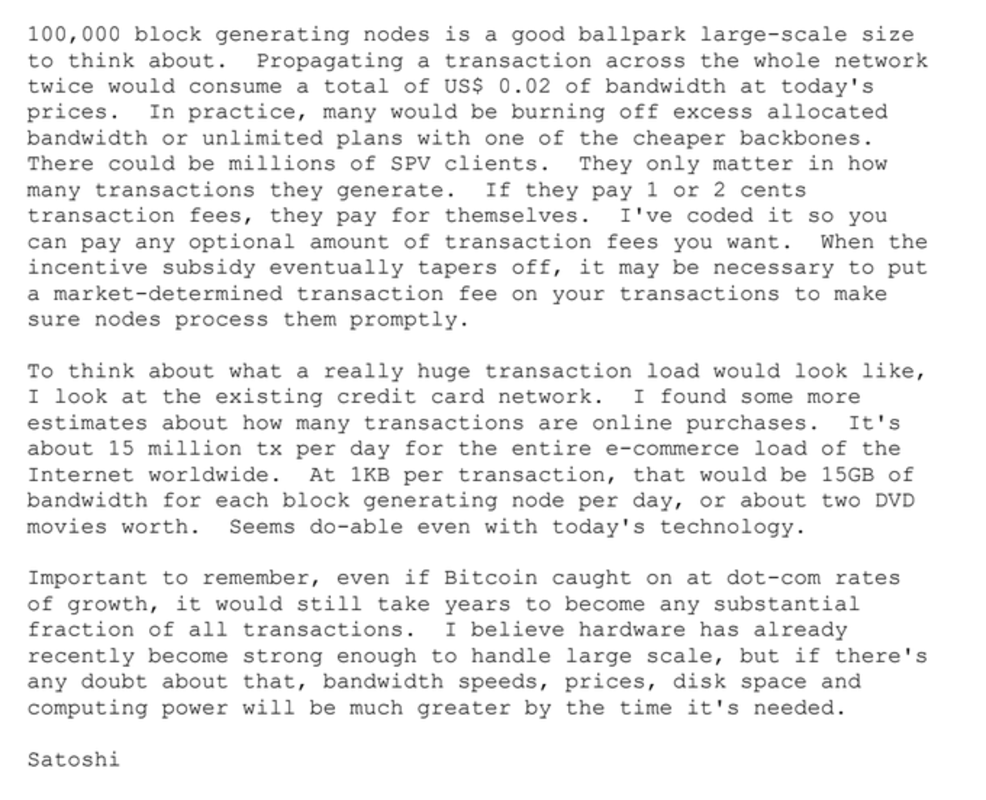
EMAIL #2: bitcoin doesn't waste energy
Although he didn't stick around to see the tremendous uptick in bitcoin mining using abandoned resources, it turns out that Satoshi knew the network was green.
One of the first critics of his new creation, Satoshi spent time addressing the idea that bitcoin mining was a waste on forums, most notably saying that not having a currency like bitcoin would be the biggest waste.
Here, however, he expands on the idea in more detail and in a more vivid and descriptive manner than we have seen before.
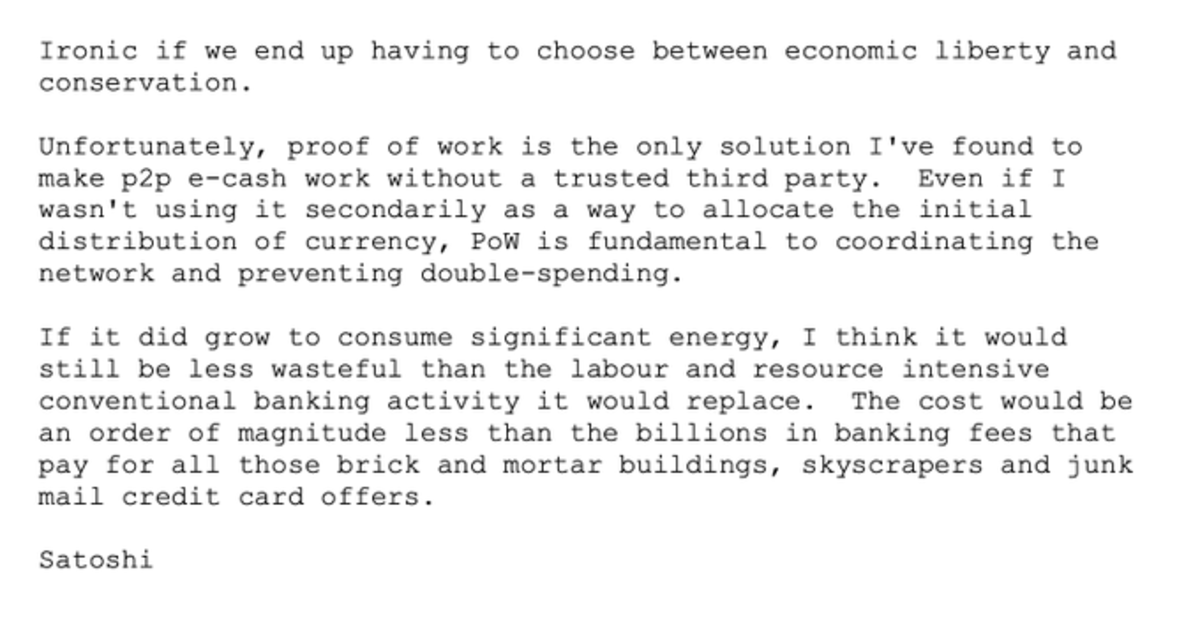
EMAIL #3: Satoshi on time stamping
An intense debate today remains whether bitcoin is money, or whether it can or does have other ancillary uses.
In this email exchange, Satoshi appears to offer some insight into the debate, noting his belief that the blockchain can be used as a distributed timestamping server. This is similar to what has happened in Guatemala, where the blockchain has been used to certify controversial elections in recent years.
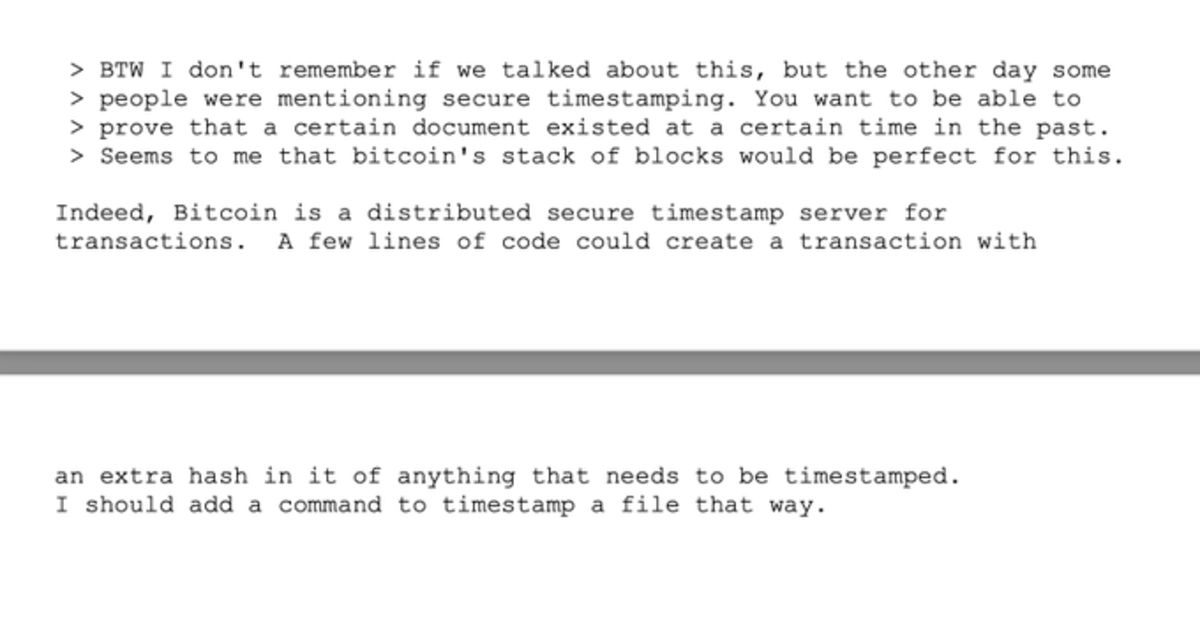
EMAIL #4: Satoshi talks about DigiCash
Satoshi describing the differences between bitcoin?src=hashtag_click”>#bitcoin and DigiCash, David Chaum's failed electronic money.
This is notable because Chaum's work had a profound impact on cypherpunks, including Hal Finney. He specifically discusses the differences in the privacy properties of the two models and notes that, unlike Chaum's scheme, he did not support an offline model, requiring all participants to be online to make use of the system.
It also explains the finite supply limit of bitcoin.
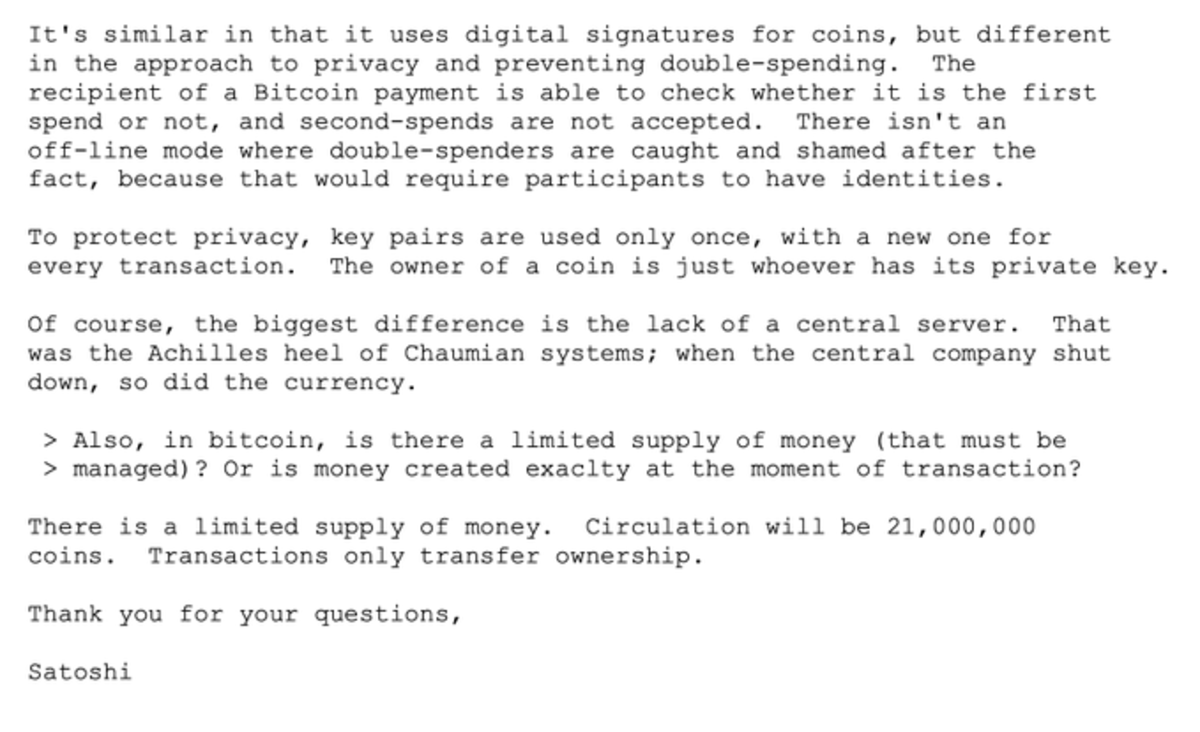
EMAIL #5: Satoshi was worried about bitcoin promotion
Satoshi was worried about the legal risk in launching bitcoin?src=hashtag_click”>#bitcoinand noted that he felt “uncomfortable” explicitly labeling it as an investment.
Note: Here we also see that he did not come up with the term “cryptocurrency.”
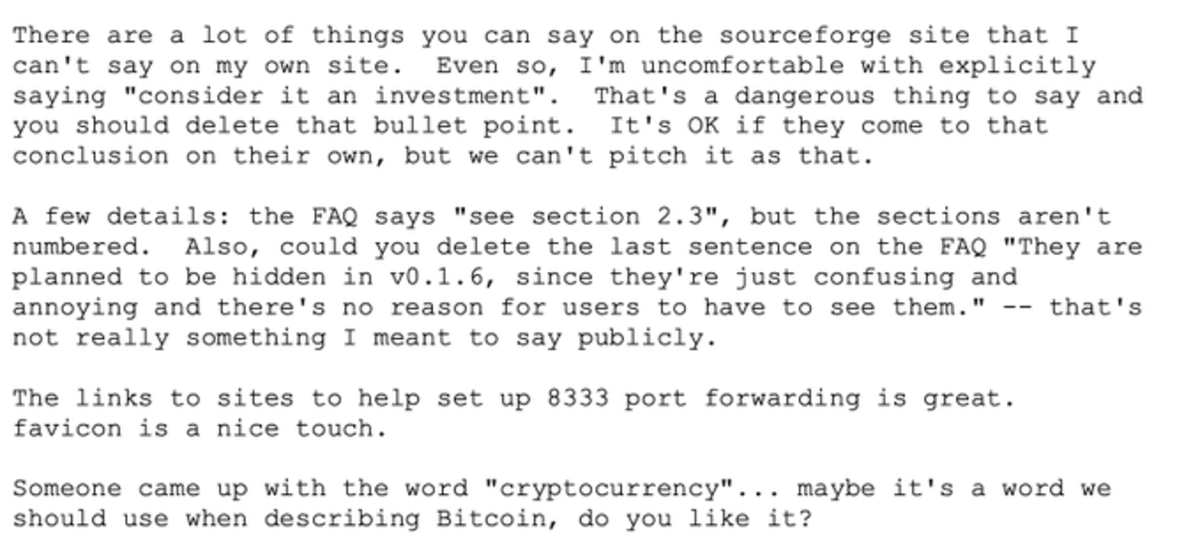
EMAIL #6: Satoshi got burned on bitcoin
In July 2009, Satoshi was tired and saying he “needed a break” from bitcoin. Here he also explains Hal's absence from work. He also mentions having spent an 18 month period at the time developing bitcoin.
A curious note as well is that he asks Malmi if he had any ideas for applications that people can actually use bitcoin for.
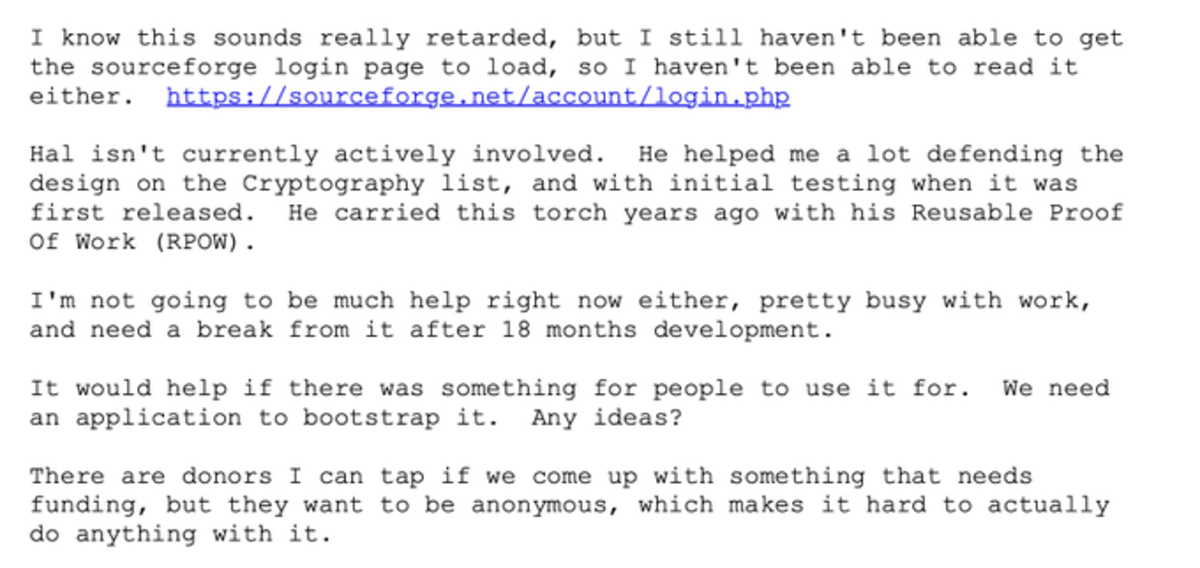
EMAIL #7: bitcoin, a way to get free money
Satoshi discussing how bitcoin?src=hashtag_click”>#bitcoin I could get adoption. Of note is his emphasis that bitcoin was easy to obtain given that it could be mined on a computer. He also posits how the nature of a market trading bitcoin would evolve, discussing how skeptical people might be about its value, stating that he was confident that the increasing difficulty of mining would prove its scarcity to people.
Very different from how we think about btc today in terms of acquiring it, but demonstrating a prescience of how people would mentally value it in the future.
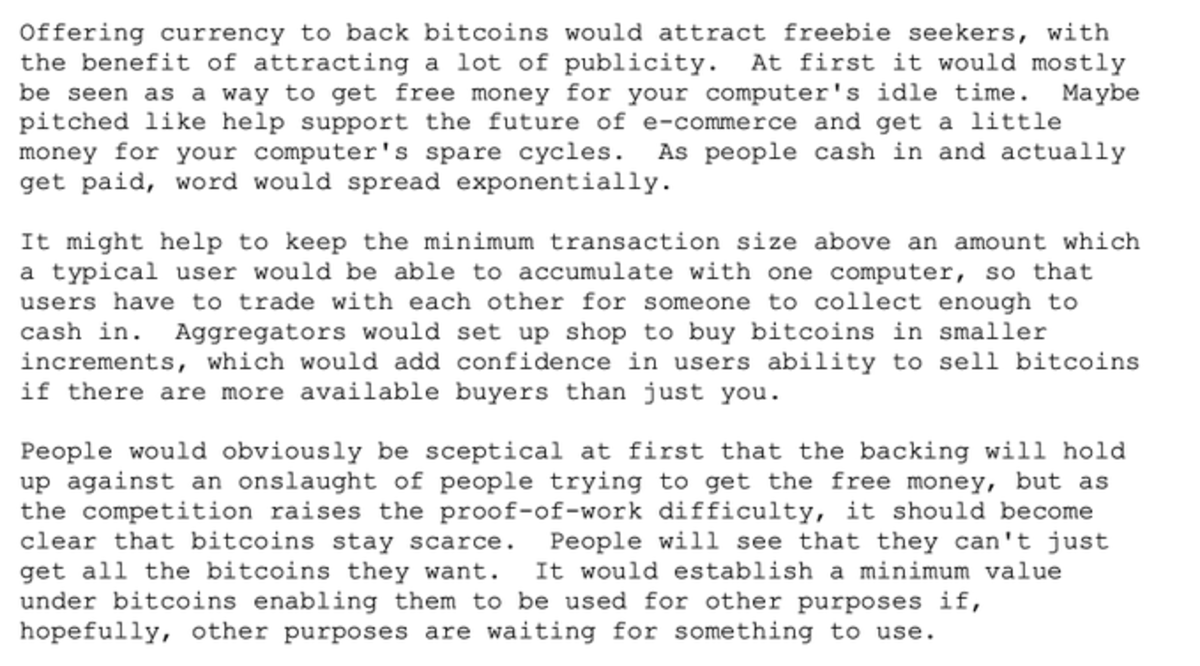
EMAIL #8: Mysterious bitcoin Donor Emerges
In June 2010, someone offered to donate $2,000 to Satoshi for his bitcoin?src=hashtag_click”>#bitcoin work. In particular, he had the donor send it to Martti's address. He also communicated his concern that the donor's privacy be respected.
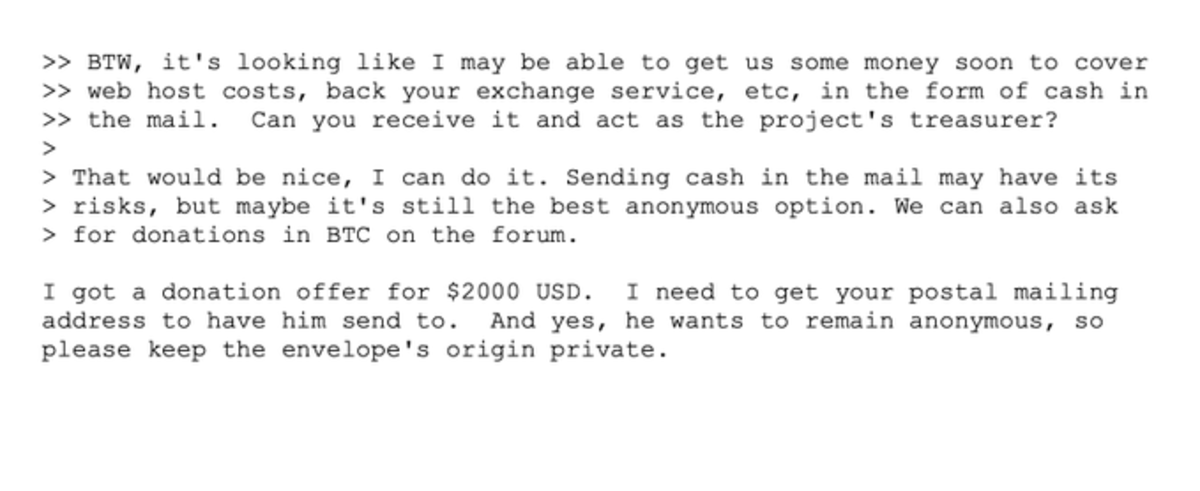
EMAIL #9: Satoshi was a fan of free transactions
I already knew this, but Satoshi was quite insistent that early adopters consider bitcoin?src=hashtag_click”>#bitcoin “free.” Here he talks about removing transaction fees from the UX of one of the first software.
It's interesting that their reasoning was to hide this feature from users, but at the same time recognized its need in the distant future.
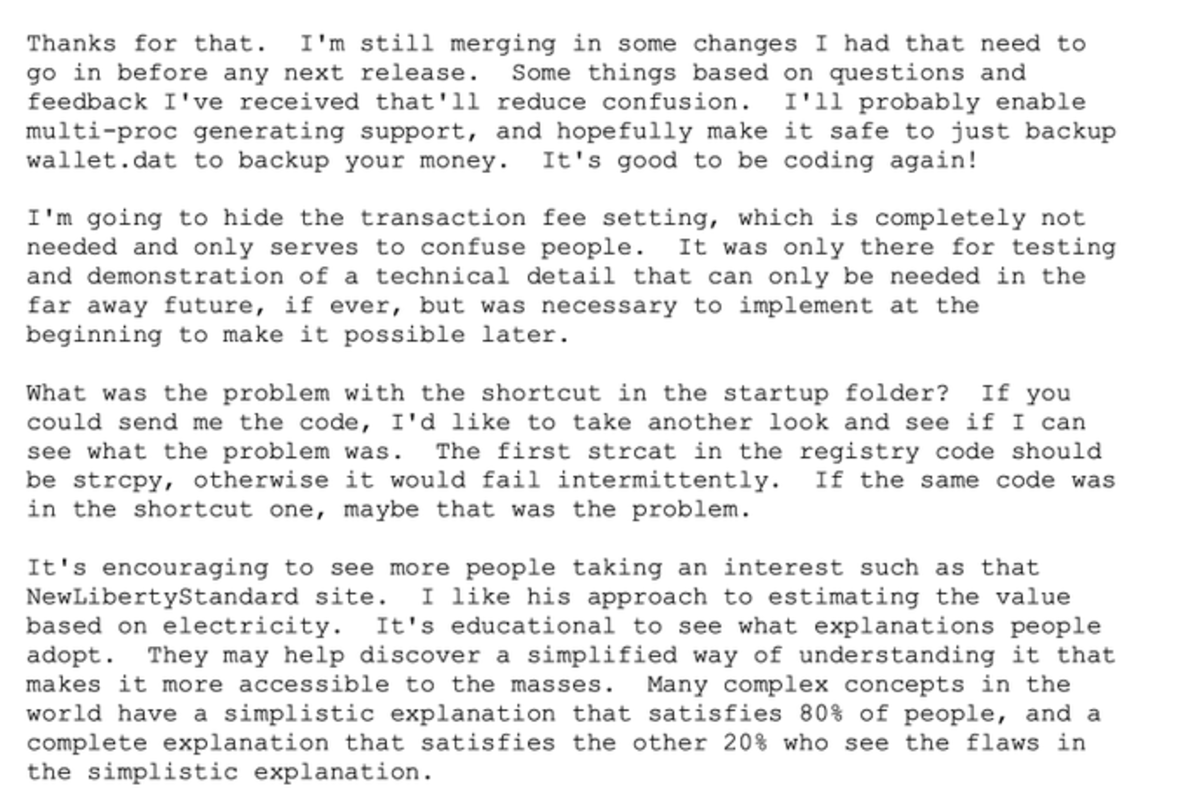
EMAIL #10: Satoshi dedicated himself to his work with bitcoin
Satoshi worked on bitcoin?src=hashtag_click”>#bitcoin Christmas Day. Here are some interesting implications to consider regarding his personal life.
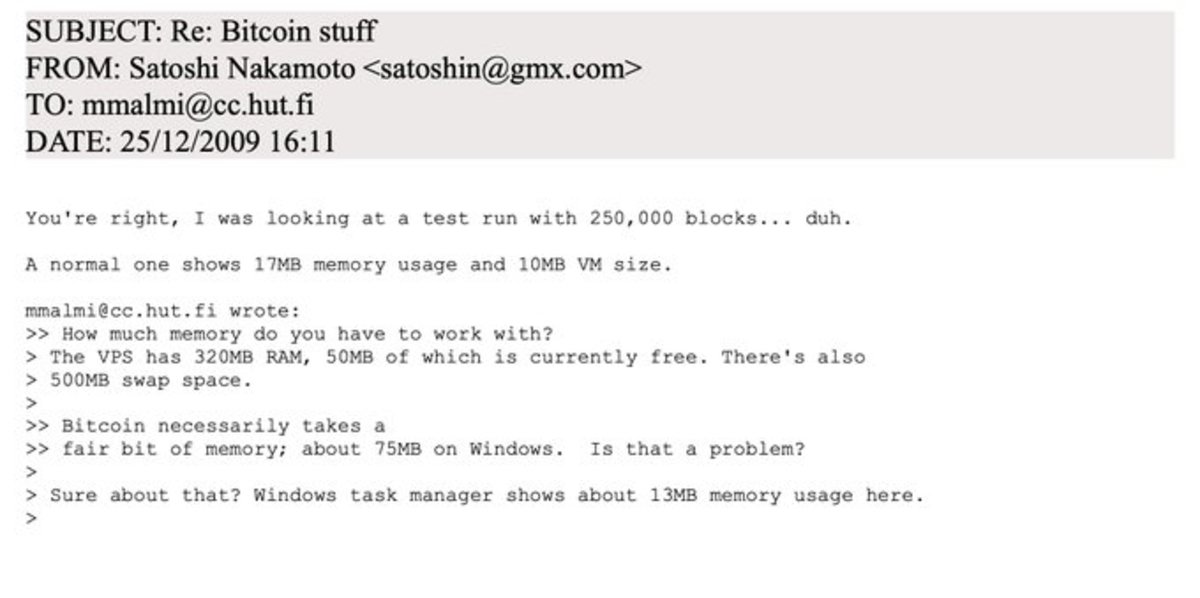
EMAIL #11: bitcoin, a web currency for forex trading?
Satoshi saw bitcoin?src=hashtag_click”>#bitcoin establishing itself as a way to operate with other Internet currencies such as Liberty Reserve. He also continues to analyze the potential of markets that sell gift cards for bitcoin, which ended up becoming and are to this day an important market for bitcoin.
Note: The United States subsequently closed Liberty Reserve.
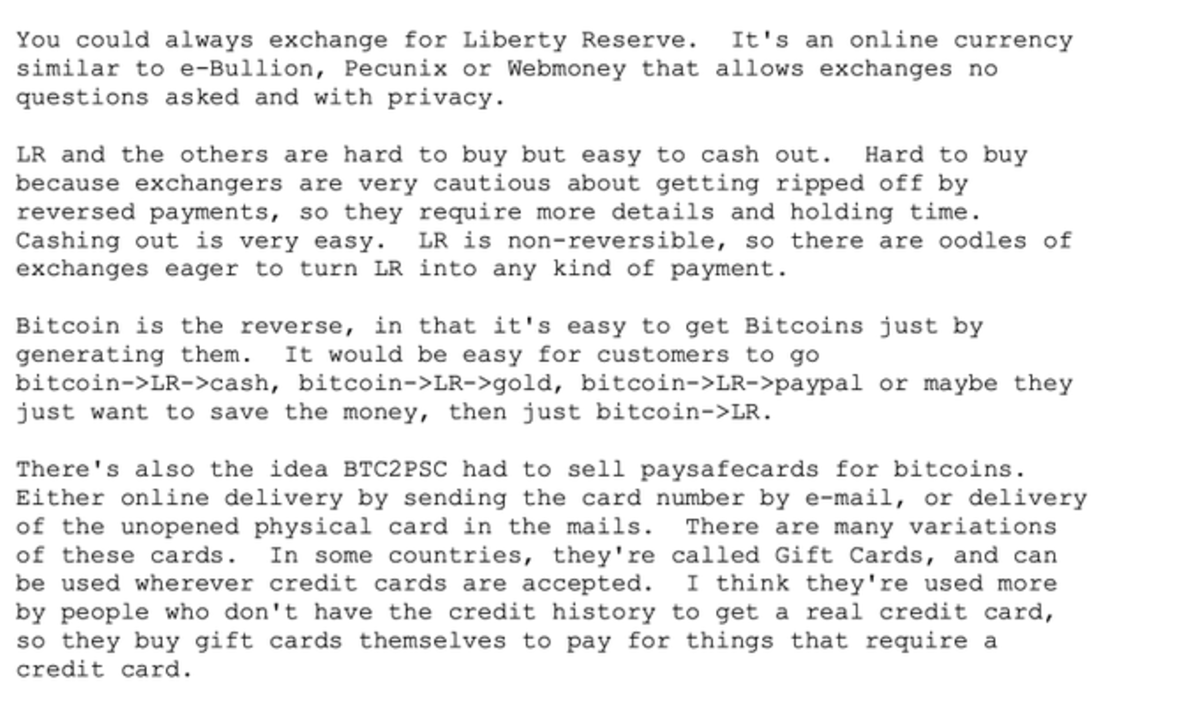
EMAIL #12: Satoshi's First Disappearance
Satoshi had a mysterious leave of absence bitcoin?src=hashtag_click”>#bitcoin in 2010. Here he talks about it with Martti, although he is also sparse in details.
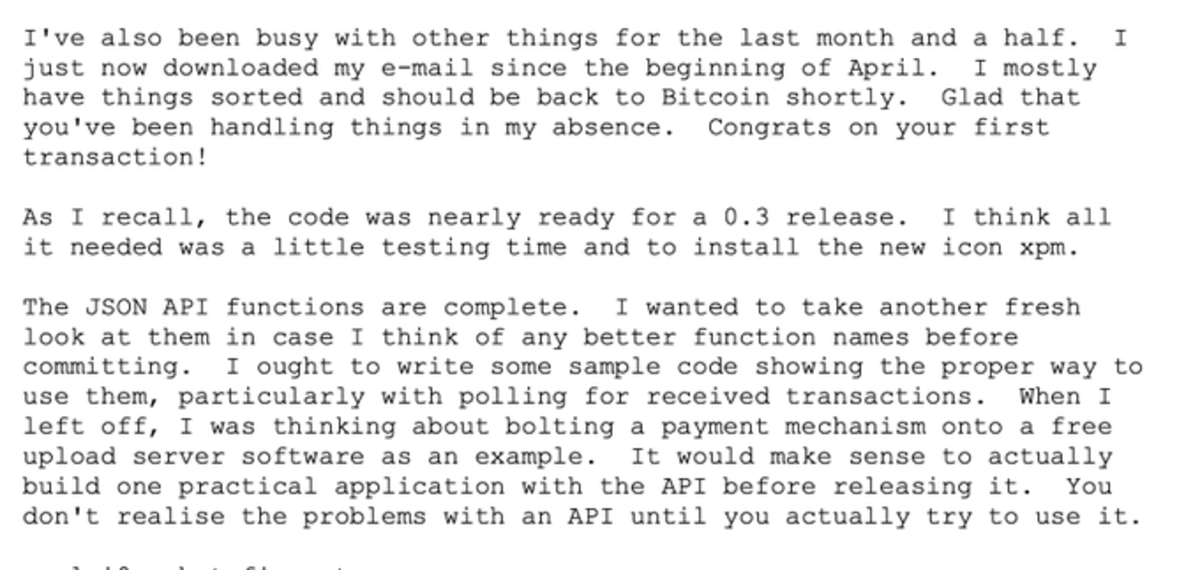
EMAIL #13: Satoshi realized that bitcoin was not anonymous
It was Satoshi who removed the language that bitcoin was “anonymous” http://bitcoin.org. He worried it would make bitcoin look “shady.” This echoes his later sentiments surrounding Wikileaks' announcement that he was accepting bitcoins for donations.
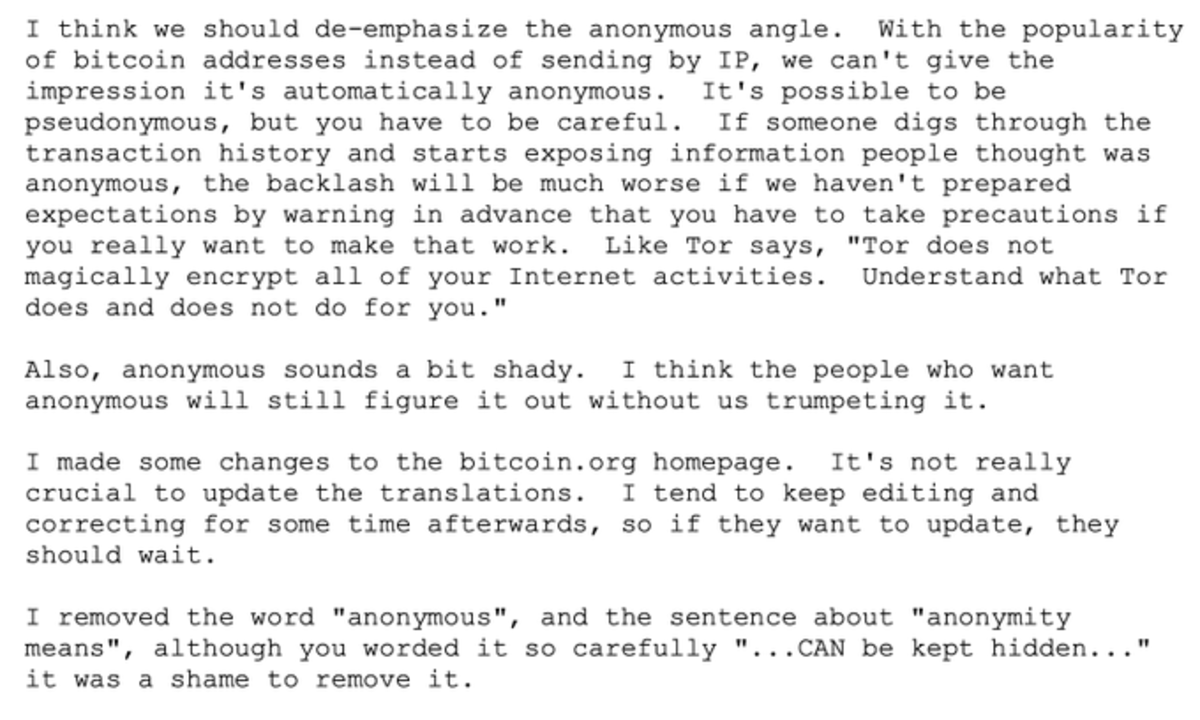
EMAIL #14: Satoshi praises his protégé
It's worth noting that, given the historical revisionism around this, Satoshi thought highly of Gavin Andresen. Here he praises Gavin and refers to someone else as a “fool.”
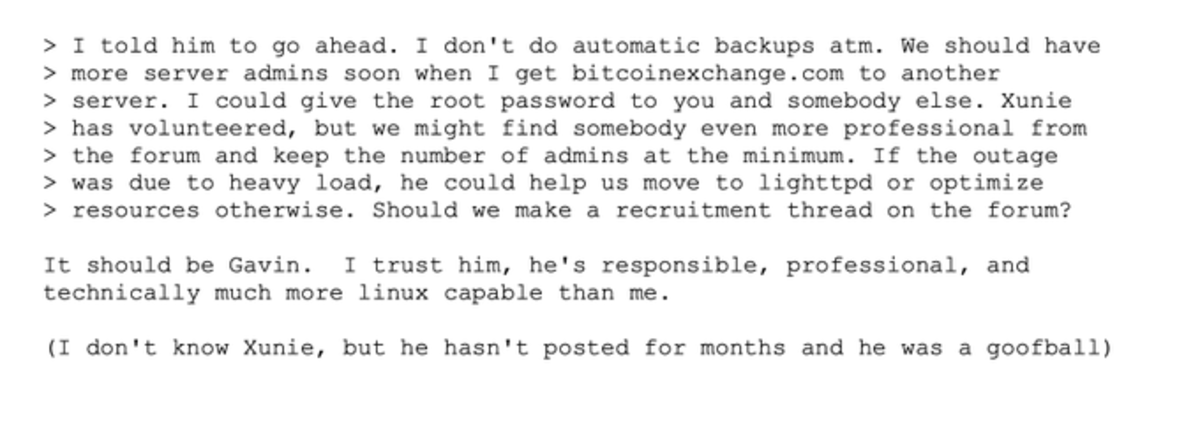
EMAIL #15: Satoshi says Sayonara
We finally have a copy of the email Satoshi sent to other developers before removing his name from the project website. As they have said, Satoshi does not mention at all his intention to walk away from the project.
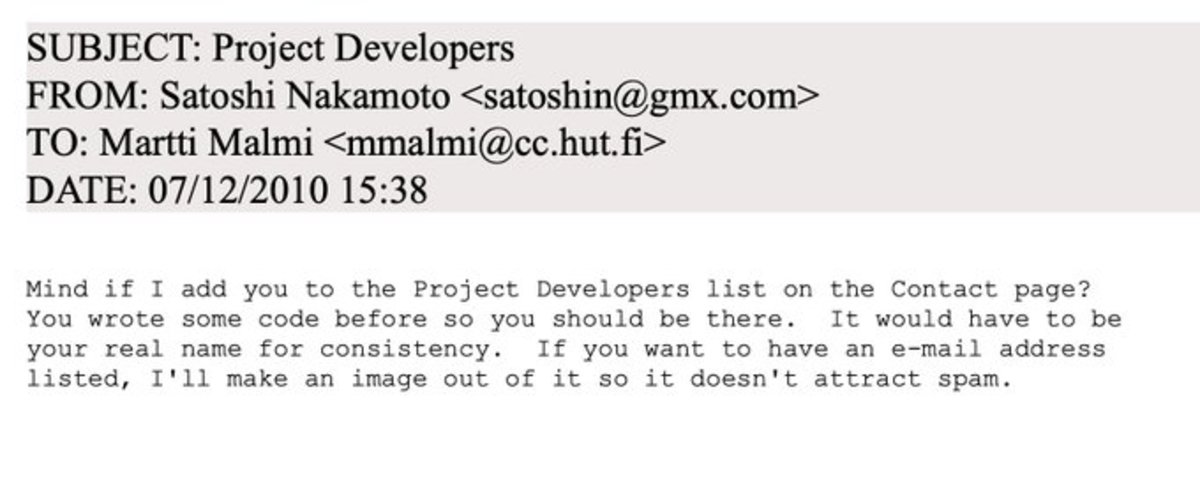
Overall, no substantial new information comes to light, but the emails give a new angle to Satoshi's interactions with other people involved in the project before his departure.
 NEWSLETTER
NEWSLETTER





